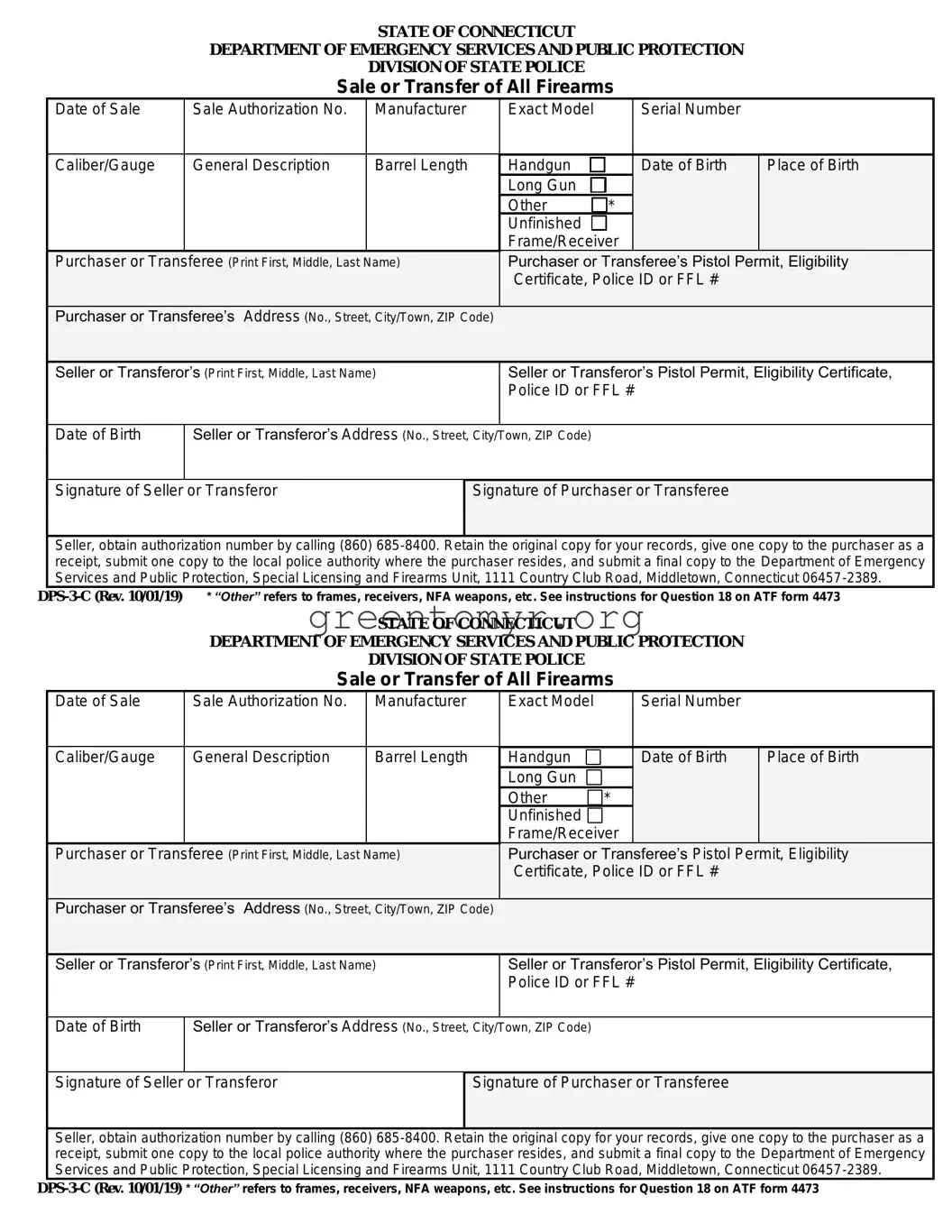The BOS DPS-3-C form is a document used primarily for reporting and documenting specific activities or incidents related to the operations or administration within the jurisdictions covered by the Bureau of Security and Investigative Services (BSIS). It provides a systematic way to collect and maintain information, ensuring accountability and compliance with relevant regulations.
Typically, individuals or organizations involved in security and investigative services may be required to complete this form. This includes licensed security personnel, private investigators, and businesses operating under the jurisdiction of BSIS. The requirement often depends on the specific circumstances and regulatory guidelines that apply to their activities.
The submission of the BOS DPS-3-C form is generally necessary when a significant event occurs that warrants documentation. This could include incidents such as breaches of security, unusual activities, or other relevant occurrences that impact compliance or safety. Timeliness is essential; forms should be completed and submitted as soon as the incident has occurred or been identified.
The BOS DPS-3-C form can be obtained from the official BSIS website or directly from the relevant state department offices. It is often available as a downloadable PDF or as a physical copy upon request. Checking the website for the latest version is wise, as forms can be updated periodically.
To complete the BOS DPS-3-C form, the following information is typically required:
-
Personal or organizational identification.
-
Details of the incident or activity being reported.
-
Date and time of the occurrence.
-
Location of the incident.
-
Individuals or entities involved in the situation.
-
Any actions taken in response to the event.
-
Follow-up measures or plans, if applicable.
Yes, there is typically a deadline for submitting the BOS DPS-3-C form following the occurrence of an incident. While this can vary based on specific regulations or situations, submitting the form within a few days of the event is usually advisable. Timely reporting helps ensure accuracy and the effectiveness of any required follow-up actions.
In many cases, jurisdictions have begun to offer electronic filing options for the BOS DPS-3-C form. This can simplify the process, making it more efficient for individuals and organizations. Be sure to check with the relevant department or the BSIS website for available electronic submission methods and instructions.
After submission, the form may be reviewed by the appropriate authorities within BSIS. They will assess the information provided, which may lead to further investigation or actions if warranted. It might also become part of a broader database that helps monitor compliance and security within the sector.
For additional resources or assistance, visiting the official BSIS website is highly recommended. There, you can find guidelines, FAQs, and contact information for support. Additionally, other industry-related organizations or legal professionals specializing in security and investigation services may also provide helpful resources.

